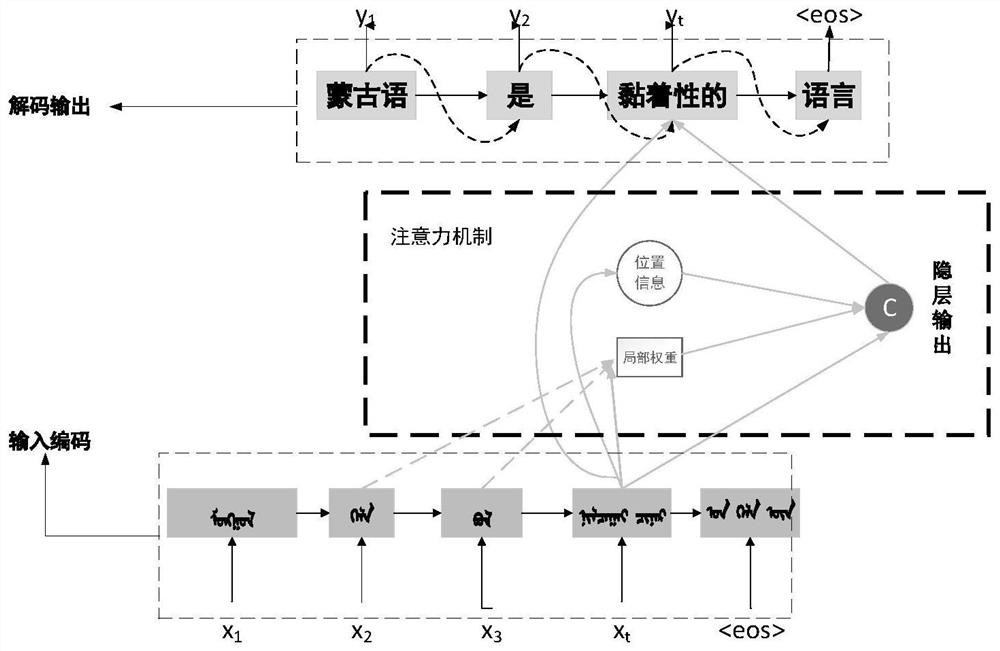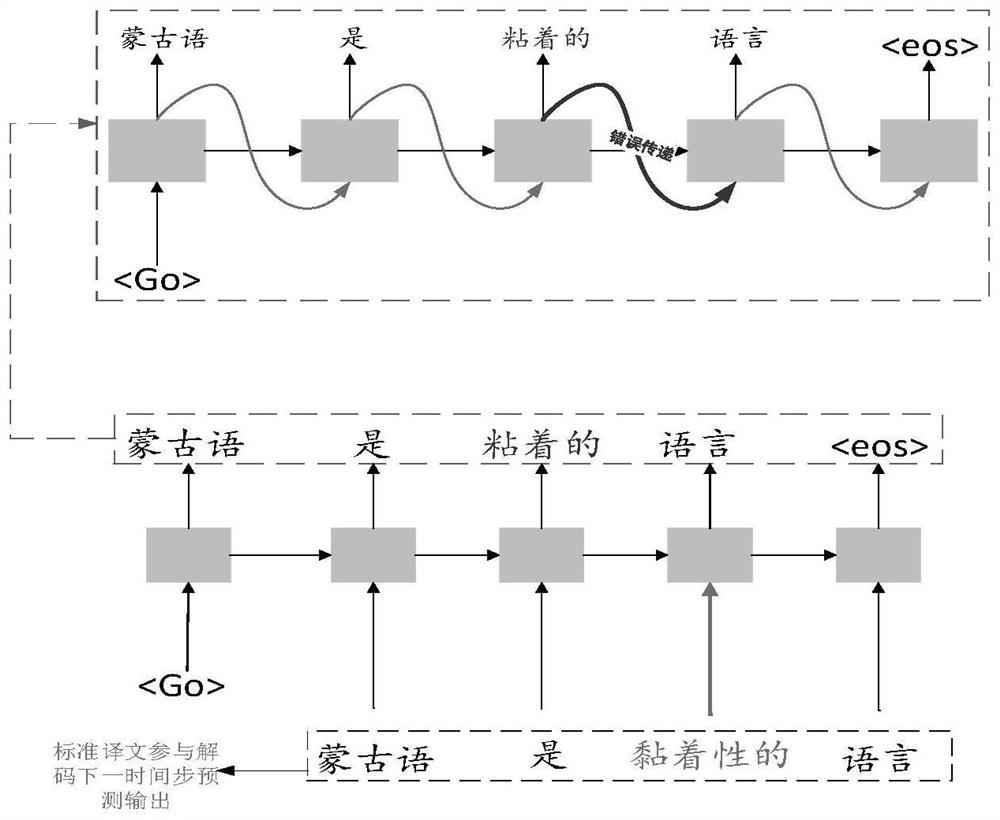Mongolian-Chinese neural machine translation method based on multiple constraint terms
A machine translation and multi-constraint technology, applied in the field of machine translation, can solve problems such as inconsistency in evaluation indicators, semantic loss, and training sample distribution deviation in the training and reasoning phase, and achieve the effect of improving readability
- Summary
- Abstract
- Description
- Claims
- Application Information
AI Technical Summary
Problems solved by technology
Method used
Image
Examples
Embodiment Construction
[0067] The embodiments of the present invention will be described in detail below with reference to the accompanying drawings and examples.
[0068] First, a brief introduction to the Mongolian-Chinese neural machine translation process:
[0069] (1) Mongolian-Chinese neural machine translation
[0070] Principle: Mongolian-Chinese neural machine translation uses a deep learning training model to convert Mongolian (or Cyrillic Mongolian) text into Chinese text. The principle is to preprocess the Mongolian text corpus data through denoising and segmentation. The corresponding embedding vectorized representation is better represented and feature extraction in the model. The model is guided by the selected machine learning algorithm to establish the data mapping relationship (model parameters) based on the bilingual (Mongolian-Chinese), and then This mapping relationship is gradually accurate through multiple iterative training, and finally produces a good generalization ability...
PUM
 Login to View More
Login to View More Abstract
Description
Claims
Application Information
 Login to View More
Login to View More - R&D
- Intellectual Property
- Life Sciences
- Materials
- Tech Scout
- Unparalleled Data Quality
- Higher Quality Content
- 60% Fewer Hallucinations
Browse by: Latest US Patents, China's latest patents, Technical Efficacy Thesaurus, Application Domain, Technology Topic, Popular Technical Reports.
© 2025 PatSnap. All rights reserved.Legal|Privacy policy|Modern Slavery Act Transparency Statement|Sitemap|About US| Contact US: help@patsnap.com



